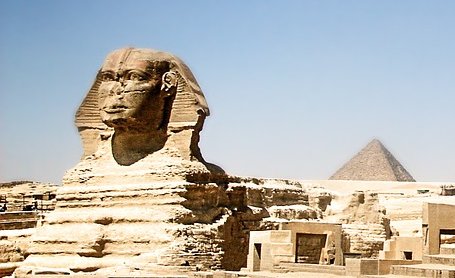George Johnson on Robert Schoch and James Harrell
From “Readers’ Forum”: KMT Vol. 5, No. 3, Fall 1994, p 5
Reproduced with Permission
Regarding the debate between Professors Schoch and Harrell concerning the age of the Sphinx: I fear nothing will convince Schoch of the error of his conclusions. “The stone is old” theory pops up somewhere in archaeology every generation. Why do many people, the press – and now TV – keep buying the idea each time it resurfaces in another context?
I am not condemning Schoch for his theory – scientific inquiry must start with a theory, and he certainly has one. But I do find his proofs vague and unconvincing. Schoch is correct, however, that Harrell’s wet-sand explanation also misses the mark. Harrell comes close, but both he and Schoch fail to consider the primary cause of accelerated erosion of limestone in Egypt, the salts contained in the sand, soil and stone. It is the leaching of salts out of wet sand which is the likely cause of the erosion patterns upon which Schoch bases his theory. The site of the Sphinx forms a natural bowl that easily fills with wind-blown sand. Moisture (rains, flooding) releases the soluble salts from the sand overburden, causing a corrosive concentration that subsequently damages the underlying limestone.
An additional factor in this erosion is clearance of the sand – which has been done around the Sphinx in both ancient and modern times – exposing the limestone surface and accelerating the leaching process, causing extensive scaling and crumbling that rapidly deteriorates the stone.
I would like to offer a small demonstration of this sand-salts-leaching phenomenon. Some years ago I observed two identical small terra-cotta offering dishes in situ side-by-side on the floor of the pyramid temple of King Djedefre at Abu Rawash. One dish was upside down, the other right side up and filled to the brim with sand. When turned upright, the first dish was in near-pristine condition. Emptied of its sand fill, the second dish proved to be heavily corroded, the result of salts leaching from the sand over a long period of time and eroding the terra cotta surface.
G.B. Johnson
Logan, OH
Below: Offering dishes referred to by Johnson.


